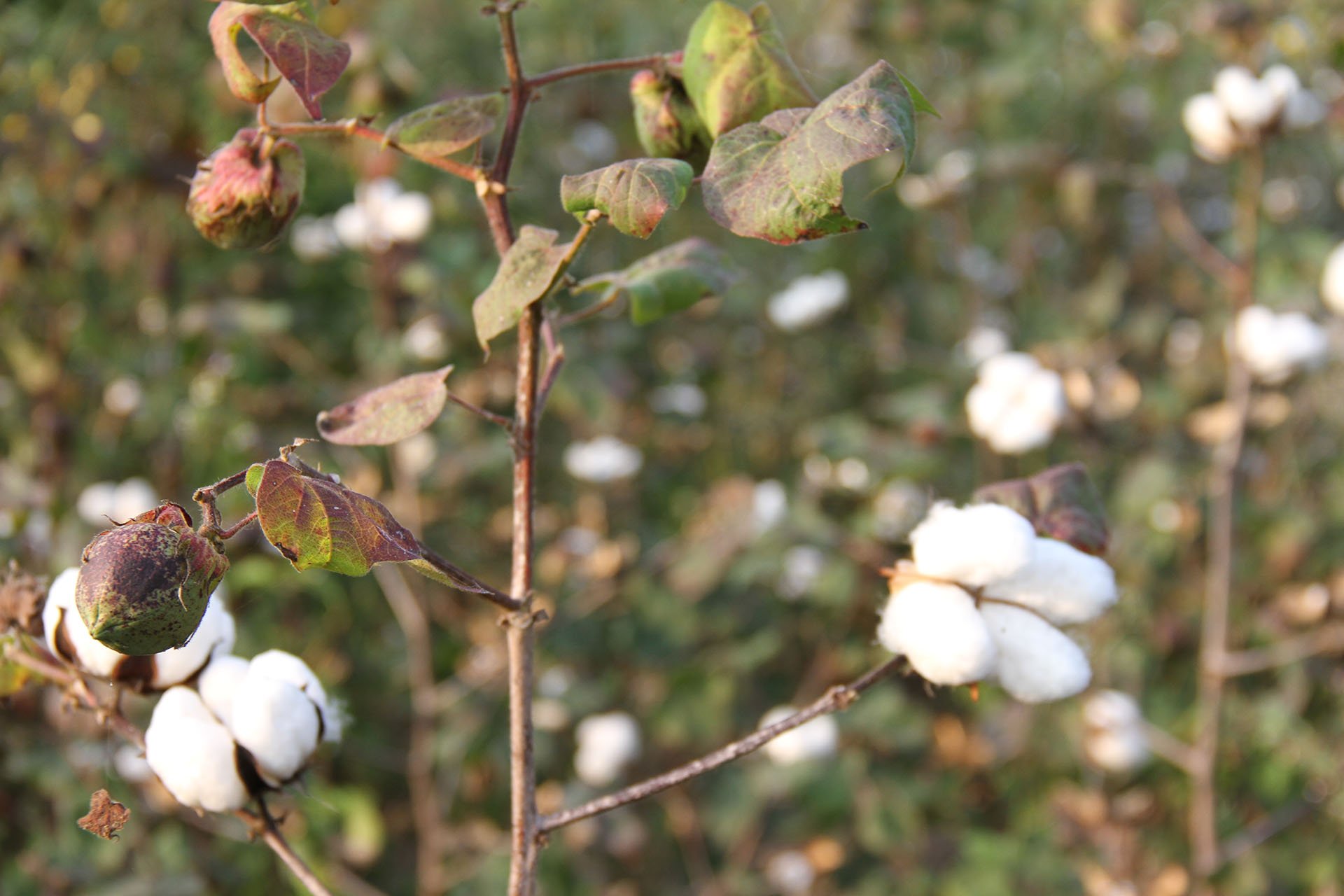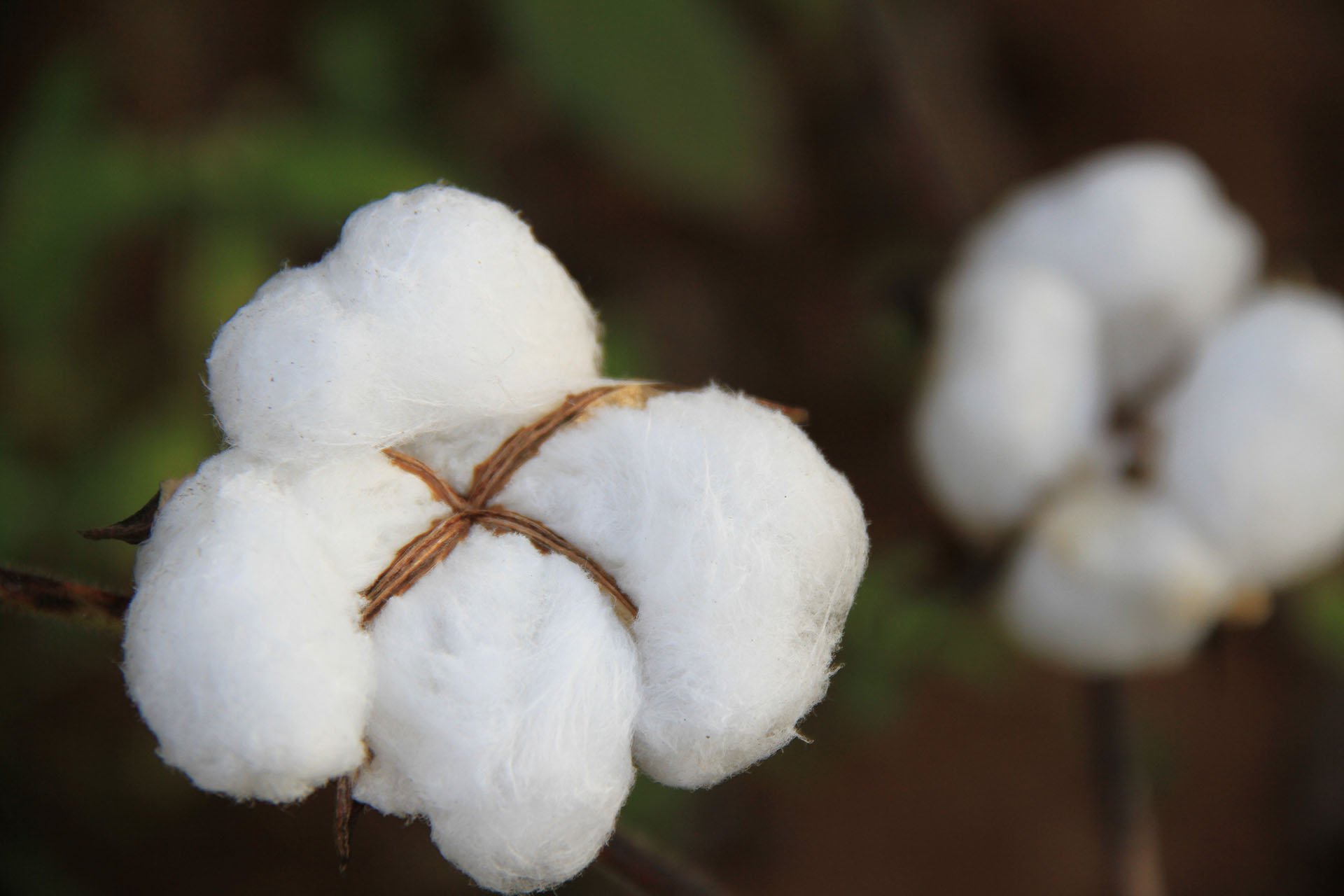Categories
Recent Posts
- Textile Industry: Towards Responsible Consumption
- What are the advantages of warm & natural colours in a bedroom?
- Weekend trip at the heart of the authentic “Domaine de St Jean”
- What is the difference between Ecological fibres and Natural fibres?
- Why is a policy of fair prices all year round more ethical than a policy of sales?
Why all cottons are not equal?
- Bruno
- No Comments
Cotton is the most used and most requested textile fibre by the textile industry and users. In recent years, a multitude of labels and certifications have emerged to try to distinguish them. But what do these labels mean and are they comparable? Hence the two questions we are often asked:
What’s the difference between organic cotton and other cottons?
And are they all equal?
The answer is obviously no, and we explain you everything here!
Cotton is the human being’s favourite textile fibre, for its softness, breathability and comfort. On the other hand, it is also one of the most polluting fibres in the world and certainly the one that consumes the most fresh water. Pollution from the huge amount of water needed to grow it, pesticides and other chemicals used to grow it and process it. But also everything related to its transport. Indeed, cotton grows only in certain parts of the world and therefore requires means of transport to travel from one part of the world to another.
Today organic cotton represents less than 1% of the world’s organic cotton production, but even if all the world’s brands were to decide to produce all organic cotton, this would not be possible. Statistics and studies show that the Earth could not produce much more than 12% of the world’s cotton, using organic cotton farming methods.
Why? Because to meet current global demand, deserts have been converted into conventional cotton fields in which climatic conditions and/or insects require chemical treatments.
We understand better why now, it is important to make the difference between all cottons in order to make your own consumption choices…
Today, there are 8 categories of cottons with very different impacts:
- Conventional cotton
- BCI (Better Cotton Initiative) cotton
- Non-certified organic cotton
- Cotton in transition (or cotton in conversion)
- Organic cotton certified OCS (Organic Content Standard)
- Organic cotton certified GOTS (Global Organic Cotton Standard)
- CmiA cotton (Cotton made in Africa)
- Fairtrade and/or organic cotton and Fairtrade
1. CONVENTIONAL COTTON
Conventional cotton is cotton that is grown using conventional farming methods, i.e. often from GMO seeds (supplied by the 6 largest chemical companies in the world), grown with chemicals (fertilizers, pesticides and insecticides) and with water and environmental management at the free choice of each farmer, even if the environmental cost may divert a river or dry a sea or lake.
Conventional cotton is the cause of the use of more than 25% of the world’s chemical fertilizers and pesticides, freshwater pollution, contamination of nearby fields, serious diseases observed among farmers, a catastrophic impact on biodiversity and many other consequences !
2. THE BCI COTTON
BCI cotton is claimed by some to be sustainable, but this is not really the case. BCI cotton is conventional cotton, grown mostly with GMOs and chemicals (fertilizers, pesticides, insecticides), the label guarantees a reasonable management of the use of chemicals with protections for the farmer, manual but also reasonably controlled water irrigation.
BCI cotton is not comparable to organic cotton and is not sustainable cotton, but for the +/-88% of conventional cotton that will always require chemical treatments, it is the best option available. So it’s better than nothing, but it’s far from being organic!
3. ORGANIC COTTON NOT CERTIFIED
Uncertified organic cotton is unfortunately a big joke.
When we analyse the data collected by official bodies on the cultivation, production and sales of organic cotton products worldwide, we have found for many years that the sum of the declarations of sales of organic cotton products in the world far exceeds that of production.
Demonstration: When a brand sells uncertified organic cotton products, unfortunately there is a good chance that their cotton is not really organic cotton. An uncertified organic cotton product is prohibited for sale in some countries, but generally speaking, if the finished product is not certified, whether the certification goes as far as the fabric or worse only up to the yarn, this means that no transaction certificate is required between the actors in the value chain and therefore it is too easy and almost systematically customary for producers not to use organic cotton but to make their customers believe it “on word”. A certified supplier does not mean either that it only produces with organic cotton; this means that it is authorized and certified to sell organic cotton products to a certified customer, but it can also produce and sell conventional cotton products to conventional customers and to non-certified customers who would order organic cotton products. The certification of all stages is therefore the only way to guarantee traceability and ultimately a product made with real organic cotton.
It is also important to understand that uncertified “organic” cotton is often “chosen” by small brands that do not have or do not know how to afford the certification process, so it is not always by first choice that they are not certified. But also, it is too often used in products from major brands and Fast Fashion brands, which claim to sell organic cotton products without certification. Consumers must therefore demand products made of certified organic cotton!
4. ORGANIC COTTON IN TRANSITION
Transition cotton (also called in conversion), as its name suggests, is an organic cotton grown on organic farmland for less than 3 years, therefore in transition to organic land. It takes 3 years (in reality the USA requires 3 years but Europe is less strict for once and only requires 2 years) for the soil to rince and clean itself of the toxicity of the chemicals (fertilizers, pesticides and insecticides) used for conventional agriculture. Organic cotton in transition is chosen by some brands because it costs the same price as conventional cotton as long as it is not certified, but it has the advantage of being grown according to 100% organic farming principles. And without cotton in transition, organic cotton would not exist since it is a must for any farmer who is aware of it.
5. ORGANIC COTTON OCS CERTIFIED
The OCS label or certification certifies only that cotton is grown without GMOs, without chemicals (fertilizers, pesticides and insecticides), and with traceability from the cotton fields to the final customer. That’s all, but it’s not bad!
6. ORGANIC COTTON GOTS CERTIFIED
The GOTS certification certifies as the previous one that cotton is grown without GMOs, without chemicals (fertilizers, pesticides and insecticides), and with traceability from the cotton fields to the final customer.
But GOTS goes further and also provides:
– Reasonable and controlled water management for field irrigation in agricultural areas, or periods of drought, requiring human irrigation.
– The guarantee of respect for social working conditions based on the principles of the ILO (World Labour Organisation) and the UN (United Nations Organisation).
– The guarantee that GOTS certified finished products (household linen or clothing) have been manufactured (at all stages of production: spinning / weaving / dyeing / printing / printing / garment), without any toxic products; neither for the environment, nor for production workers nor for users.
– GOTS certification is the only one that requires certified brands to provide, during control audits, laboratory test reports proving that there is no trace of GMOs in the DNA of the cotton used, nor traces of pesticides and other toxic chemicals. These tests are complicated and expensive, but it is the only way to ensure that cotton is natural and harmless.
GOTS is therefore the best certification of organic cotton!
7. CmiA and CmiA-Organic COTTON
CmiA (Cotton made in Africa) cotton is cotton produced in Africa and certified by CmiA that encompasses the ecological, social and economic aspects of cotton cultivation and processing. In recent years, CmiA has extended its certification with a CmiA-Organic version that adds the organic component certified according to the GOTS standard to its basic certification. When a cotton product is produced in Africa with African cotton, it is the best alternative.
8. LE COTON FAIRTRADE, or ORGANIC + FAIRTRADE
Fairtrade cotton is cotton grown by farmers who are Fairtrade certified through their agricultural cooperative and who, through this choice, receive a “Premium” price for each kilo of Fairtrade cotton sold to a Fairtrade certified brand like Kalani and other brands. The Fairtrade “Premium” price is calculated by Fairtrade International for each country of cultivation according to the standard of living in order to gradually try to provide a fair and sufficient income to live with dignity if 100% of their agriculture could be bought at the Fairtrade fair price. The most sustainable and fairest cotton is therefore certified organic cotton + certified Fairtrade!
To conclude, we would like to say that…
Soil is gold, and organic farming is the only way to combine “agriculture” and “security” for humanity. The most sustainable and fairest cotton is therefore certified organic cotton + certified Fairtrade (for the whole world), and CmiA + organic cotton (for African productions).
Not all cottons are therefore equal and as a user and consumer; each purchase is a choice and a position on what the environment and its farmers deserve, so think about it and make the right choices!




